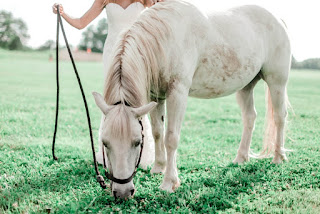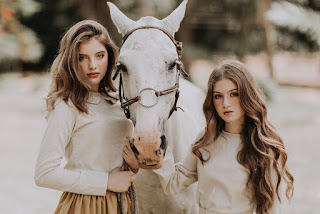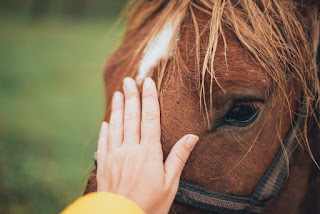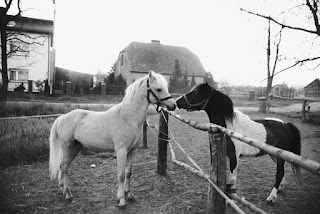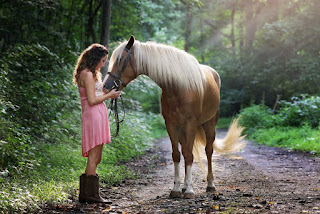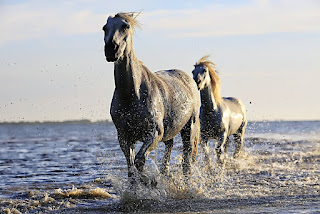How to groom a horse easily
How to groom a horse ? One of the most important questions we must answer in our website.
So How to groom a horse safely
In this article, we will explain to you in detail how to groom your horse in the best way.
How to raise a horse
There are many things that need to be provided correctly; To ensure good care for a horse or horse if it is desired to raise it , including the following :
Horse dwelling There are many important matters related to the housing of horses, and they are as follows :
Barn The desire to create a new barn to make it a residence for the horses is a matter that needs to be verified by the organizational laws that allow the person to implement it, and these laws differ according to the location of the place within a populated area, or if it is within a rural area , and it is recommended to raise the floor of the horse barn by no less than thirty centimeters On the ground to ensure a good drainage of water through it, as this is extremely important for the health of the horses. The moisture that occurs on the floor of the barn from being submerged in water can damage the horse's hooves. The size of the barn suitable for horses varies depending on many factors; Like the size of the horse, and the period of its stay in the stable, as horses of about half a ton in weight need a pen with dimensions of not less than three and a half meters; In order to be able to move and sleep comfortably, regardless of the difference in the size of the barn, there are many essential things to make it a safe place and a suitable environment for it, and it is recommended that the walls of the barn be approximately two and a half meters long; This is so that the horse cannot jump over these walls, or it can be said that the barn wall must be built such that it is not less than one and a half times the length of the horse itself. Low ceilings in pens can be harmful to the horse’s health, as well as prevent air movement through these pens well. As is the case with the walls of the barn, its door must be raised by approximately two meters, and a width ranging from 1.0668 meters to 1,143 meters (42-45 inches); So that it is safe for the horse to cross through. There are many different designs for barn doors, such as dividing the door into two separate panels, or even not covering it completely, and whatever the design or material was used to create the barn door, there is no doubt that it must be durable, strong, and free from any edges that may expose the horse To risk, or injury. It should be noted that adequate lighting should be provided inside the barn to ensure proper care for the horses, and it is recommended that the internal partitions for the barns be made of wood.The strong one that the horse cannot chew and is not affected by the kicking of its hooves, in addition to that the horse barn must contain many basic components, such as a bucket of drinking water, a feeding basin, as well as special rings to tie the horse to it.
Read : Small horse breeds in the world
Outside shelter
The commercial outdoor covers available in the market can be purchased, made of metal, or even wood, and the outer side covers of the barn are placed on three sides; To protect the horses from the wind, it should be noted that the height of this shelter should range between two and a half to three meters, with an area of ten square meters for each horse, in addition to making sure to find enough space to feed the horses.
The bed
There are many materials that can make a good bedding in a horse's dwelling, such as sawdust or straw, which are two materials that may be difficult to obtain, and their price may be high, and rice husks or peanut husks can be used as a good substitute for straw, and sawdust. For horse bedding, regardless of the nature of the material chosen, it must be all clean, free from dust, or from any other materials that may pose a threat to the health of the horse, especially those materials that may be present in the unfit wood shavings, and it is also necessary to Provide a mattress whose height and height are appropriate for the horse, and this height varies according to the different nature of the barn land; If the floor of the barn is of dirt, the height of the bed should not be less than ten centimeters, or twenty-five centimeters if it is of cement or asphalt.
Care in cold climates
Many different methods of caring for horses can be followed in cold climates, including :
Make sure to provide enough drinking quantities for the horses in cold climates, as the horses need to drink more water during the winter season. This is to compensate for the moisture content of summer fodder compared to that provided in the winter season. Increase the amount of food served to the horse in cold climates; This is to provide the horse's body with the necessary calories to warm its body and promote its growth. K calories in cold climates will maintain the horse’s body temperature instead of increasing its weight, and the fodder is the optimal food source to supply the horse with the energy it needs during cold climates. Observing the weight of the horse during the winter period, providing a larger amount of food in the event of a decrease in its weight, and reducing this amount in the event of an increase in the weight of the horse. Protect the horse barn from winds and storms that may be exposed to it in the winter season, as horses can withstand low temperatures, and this ability to withstand varies. According to the difference in the amount of hair that covers their bodies. Covering the horse’s bodies with the blankets designated for them in the absence of a horse shed, and it should be noted that the blanket should be avoided on the horse if its body is wet, or if the blanket is wet, as the horse’s body must be dried, then put the dry blanket on it, as it is worth Examine these blankets on a daily basis, to make sure that they are not damaged. Continuing to train the horse during the winter period, taking care to avoid exercising in the snow or on the ice.
Healthcare
Preventive care
There are many things that can be done to secure preventive horse care, including :
Giving the necessary vaccinations for horses, such as the eastern or western equine encephalitis vaccine, the rabies vaccine, and other other vaccines. Control of any parasitic organisms that may negatively affect horse health, such as tapeworms . Conduct annual regular horse dental check-ups; Horses may need braces. Ensure that public safety measures are taken to preserve the safety of horses. Ensure the cleanliness of the tools and facilities used by the horse.
Hoof care
Horse hooves grow at a rate between (0.6 cm -1.3 cm) per month, so the horse's hooves must be taken care of, trimmed, trimmed and kept smooth. This care avoids the horse being exposed to sudden bends that may affect it, and trimming the hooves requires only some ordinary skills, and some tools necessary for this matter, such as a file, a pliers, and a knife for hooves, which are used to remove the appendages in the hoof, then the pliers are used to remove the edges of the hoof. These hooves are smoothed and equalized through the radiator, and the growth rate of the hoof in the horse varies depending on many factors, including: the age of the horse; As hooves grow faster in younger horses, and the climate; The horse's hoof will grow faster in the summer than in the winter, and the nature of the terrain of the place where the horse lives, among other factors.
Understand the horse's behavior
A person who is interested in raising horses and horses can understand how these animals feel; This is done by being alert to some of the signals it emits that may indicate a specific meaning. When a horse raises its tail, this indicates that it is feeling excited, or that it is in a state of alert, but if its tail is lowered, it may be in a bad psychological or physical state, such as its feeling of submission, or pain, and it may also be in a state of annoyance, or anger, and that When it moves and wiggles its tail continuously. Understanding a horse's body language is not just about the tail; The face, ears, and legs all refer to many things that a horse feels; So raising a horse to its hind legs, for example, is a behavior that indicates a threatening defensive position that the horse may feel, and in opening its jaws with its teeth showing and keeping it exposed is an indication of hostility or its attacking posture, as it can be understood that the horse is in a state of alert when its ears point forward While its ears hanging downwards may indicate feeling tired, as well as many body signals that may be considered a sign of a certain feeling in a horse. It is worth noting that understanding the horse’s behavior leads to treatment or prevention of some problems that may affect it negatively. Understanding that chewing wood may be an effect of what it feels like to be bored, or because its diet lacks fiber, and knowing that what is called air suction Cribbing : This may indicate a horse losing weight, or even cramping, and other behaviors that should be understood are kicking the floor of the stable , or its walls, and kicking them , and this behavior is activated in the horse when its feeding time approaches, in addition to some behaviors that may indicate fatigue Or laziness, such as moving their bodies or turning their heads from side to side all the time.
Horse care during pregnancy
There are many practices that can be performed to care for a female horse during pregnancy and lactation, and among these are :
Take care to provide the necessary food to supply the pregnant female with energy, and the diet during pregnancy must contain a mixture of nutrients and important minerals, such as calcium, phosphorous, sugar, salt, copper, and some vitamins, such as vitamin E. It is given one month before the date of birth, and usually the fodder and natural pastures lack all the necessary elements, which means that it is necessary to buy nutritional supplements that contain the elements mentioned, and present them to the horse during pregnancy. Ensure that a mixture of grains and minerals is offered to the female horse after her birth. This is to provide them with the energy needed for the lactation process, and these mixtures are provided for a period of three months after birth, at an amount ranging from 225 to 450 grams per forty-five kilograms of the horse's weight, then this amount is gradually reduced to help the female wean her young. Make sure to exercise the horse during pregnancy; Where they can be trained naturally and participate in all kinds of competitions during the first five months of the pregnancy period, then they can be trained lightly until one month before the date of birth, and if this is not possible, it is recommended to make sure that the horse keeps standing for six hours a day . Giving a pregnant horse the necessary vaccinations to get rid of the worms, like other horses, but it is recommended that the Ivermectin vaccine be given, specifically on the day of birth, to prevent the worms from spreading to her young. Consulting your veterinarian about the types of vaccinations and vaccinations that should be offered to pregnant horses and their dates; It is forbidden to give horses any vaccinations during the first two months of their pregnancy. Ensuring adequate care conditions for a pregnant horse when it is desired to move it from one place to another, and this is through many procedures, including: Keep the transport trailer clean, and check that it has good ventilation during transport. Driving a transport trailer without being reckless. Provide food and drink while on the move, in addition to bedding. Take care to avoid transporting long distances during the last month of the horse's pregnancy.
The fence
The boarding house for the horses and horses must contain what allows the horses to be safely outside; That is why it is necessary to put a fence around the barn, so that its height is not less than one meter and twenty centimeters, and in order for this fence to be safe for horses, it is necessary to choose one of the many options that the fence of the horse barn can be made from, such as wooden panels, laminated wood, or metal fencing, Or polyvinyl chloride, known for short as (PVC), or other materials that are suitable for this purpose.
Horse feeding
Food
Food is one of the types of how to groom a horse, feeding your horse is an important part of your horse's breeding. Horses have only one room that does not enable them to break down food through bacterial digestion like other types of ruminant cattle - whose stomach contains four compartments - such as goats and sheep , where the food in horses goes directly to what is known as the small stomach through the small intestine. Therefore, horses lack the presence of muscles in their stomachs, which makes them unable to vomit if they eat some fermented foods , such as stored feed. It is recommended to provide feed, vitamins, minerals, and grains to maintain a balanced diet for the horse, and the feed is considered the main food source for the horse that can meet most of its diet needs, and the source of these feeds can be natural pastures in which there are herbs, legumes , or straw that should be Keep it in a good way so that it is not exposed to damage and rotting, and adult horses weighing more than 450 kilograms need an amount ranging between four and a half kilograms to approximately seven kilograms of straw per day. And a horse's diet is not limited to this; A balanced and varied diet must be provided to feed the horse, such as corn and barley. This is to ensure a rapid increase in the weight of the horse, and to give it more health, strength, and fattening , and it is also recommended to add some vitamin-rich materials, such as soybean meal, and make it part of the horse's food, in addition to that, adequate quantities of food should be provided within multiple meals, and create space Sufficient capacity to feed all the horses in the barn, and you must also take into account the presentation of these foods in appropriate containers, and avoid placing them on the ground; To ensure that the horse's health is not endangered.
water
Horses need to drink large quantities of water every day, and these quantities range from 38 to 45 liters of water for horses weighing approximately 450 kilograms, and with these large quantities of water that the horses need, these waters contain some mineral salts The light must be clean, uncontaminated, and regularly available to horses, and the lack of drinking water may cause more problems for horses than lack of food may cause them.
Horse care
Daily care
Horses should receive regular grooming on a daily basis; This is to maintain its cleanliness, the cleanliness of its hair, and rid it of any materials that may stick to it, and this daily care gives the opportunity to closely inspect the horse’s body, and it also helps to make the horse strong by stimulating its muscles to grow, as well as it is something that horses prefer and desire, It is recommended to clean horse hair before and after riding, and to achieve this, many different tools can be used, such as a brush, a glove for cleaning horse hair , a rough brush, a piece of cloth or wool, a cotton towel, a special tool for cleaning the hoof, and an electric hair clipper, And other tools for horse hair care and cleaning. It is possible to take care of daily cleaning by starting by combing horse head hair with a brush or gloves in the direction of hair growth, then cleaning the brush or glove from the hair stuck to it, and moving to the rest of the body areas in the horse, taking into account the use of appropriate tools everywhere on the body, and it can be used With bare hands to groom and massage young horses.
Waste cleaning
Horse stables and pens must be kept clean, free of litter and litter, by removing only wet or dirty floor mats; It is not necessary to completely remove the mattress to clean it, and it is also possible to get rid of its moisture by exposing it to the air after removing the horses and equipment from the stable, and if this is not possible, it is possible to put some of the dry bedding that makes up the floor of the stable, then wait until the moisture of the mattress is absorbed The old one using the new bedding that was placed, and then removed after that, and it is advisable to put the lime material under the horse's bedding; To resist odors and moisture in the stable, and the cleaning process may require a daily effort at first to perform it, but as soon as some time passes until the cleaning process becomes at least weekly, when the person caring for the horse becomes aware of the exact location of its excrement.
Exercises
Horses are considered living creatures that need constant training and exercise to maintain their fitness, and just as any sporting activity needs many correct practices for its performance, horse training needs some correct practices in order to run well. The horse should not be fed and drink excessively immediately after training; Because this matter may cause harm to the horse's health, in addition to avoiding providing water directly after the horse has performed exercises, but some sips of water are provided partially, and one of the important things after training is to make the horse walk its natural gait without stress, and to clean it of sweat and dirt And removing its stall, and it is worth noting that the horse must be given an opportunity to walk for a minimum of one hour per day.
Care in hot climates
Many different methods of caring for horses can be followed in hot climates, including :
Put the horse in an area out of direct sunlight, or move it to a cool barn with good ventilation. Spray the horse's body with cold water, while avoiding spraying water directly on the face or ears, and the temperature of these areas of the horse's body can be reduced by a towel moistened with water. Putting ice packs on the visible blood vessels on the horse's neck and legs. Avoid offering large quantities of water to the horses, and offering it to them in the form of separate doses every few minutes, and making sure that the water is fresh and cold. Reducing the riding gear that is placed on the horse. Call the veterinarian if the horse’s body temperature exceeds about 40 degrees Celsius, or when she notices an increase in her heart rate or breathing rate, even if she does not make any effort.
Taking care of the young horse
You need to know how to groom a horse and of cours young horses. Young horses depend upon their birth on the mother's milk, which provides them with the necessary requirements for growth and subsistence. Therefore, care must be taken to secure the mother horse with sufficient quantities of food and water to ensure the success of the breastfeeding process naturally, without depleting the energy stores in her body, and the lactation period of the young foal must be monitored . Nurturing the little one for more than thirty minutes may indicate the need for additional sources of nutrition, or even an alternative to breast milk. Mother's milk remains the optimal source of food for the little mare , until the age of eight or ten weeks, after which the son of the horse may need to feed him some grains, high-quality fodder, as well as many types of vitamins and minerals that must be eaten in correct proportions, and something Then the little horse begins to switch to feed as an alternative food source for mother's milk, and when this happens, many things must be taken into account to feed him properly and properly, such as providing high-quality feeds and grains, balanced nutrients, and providing him with daily food in an amount of not less than one percent relative to his weight. And taking into account the constant provision of water, in addition to serving food on separate meals.
Tools used to ride and steer a horse
Horse trainers need many tools that are used when dealing with horses for various purposes, and the following are the most important tools used to ride and guide horses:
The bridle : it is a cover for the horse's head used to lead and direct it, and it consists of several parts, namely :
The sag: consists of metal pieces placed in the mouth of the horse to control it by applying pressure to a certain part or parts of its mouth and head, and it is equipped with rubber circular discs used to protect the horse's lips and the corners of its mouth called the socket guard
The excuse: which consists of a group of straps that are placed over the horse's head and surround it, as its role is to fix the gag in its position, and sometimes it contains pieces of skin called blinkers placed on both sides of the horse's eyes to reduce His side view, in order to protect him from fear and prevent him from being distracted.
Unleashed:is the course of Bridle maintained by the passenger in his hand, and communicates its parties Balchukamh from both sides, and uses the horse to steer towards the side pulled by the passenger, It is worth mentioning that Bridle comes different depending forms on the quality of the ride, for example , does not contain A bridle used to drive young horses on a gag so as not to injure their mouth, this type of bridle is called a hackamore.
Saddle: used as a seat for the knight on the horse's back, and among its types is the western saddle that contains a high front part for fixing the rope used in pulling the horse, and a back part that provides a stable seat for the rider during the stretching of ropes, and the English saddle designed for sports and recreational uses . Being soft and lined, it is lighter than a Western saddle.
Stirrup : is a pair of light tires or rings that attach to the saddle, and are used to help a rider mount a horse by supporting his feet while riding.
Halter : a head covering used to tie the horse, grip and lead it, and it is made of nylon or leather. However, the halter made of nylon is characterized by its low cost, long life, and ease of cleaning. It is worth noting that there are several sizes of Arsal to suit horses of all types , ages, and weights.
Leadership: rope is related to the cord Balrsen, and is made of leather or nylon.
Reading horse body language
The ability to read a horse’s body language is one of the necessary skills for a horse trainer to be able to understand his behavior and feelings. The following are the most important meanings of the physical movements that horses communicate with each other and with humans :
Ears: the horse presses its ears back and it is flat if it is angry and then it must be dealt with with caution, and this movement may also indicate his inability to understand what the trainer wants, but if his ear is extended forward, it indicates curiosity or friendliness, while drooping ears On the sides on his illness or relaxation.
Head: The horse extends its head and neck as an expression of curiosity, while it raises its head and arches its neck when it is in a state of alert and alert.
Mouth: The horse opens its mouth and exposes its teeth if it is angry and then it is necessary to beware of it, while it closes its lips tightly if it is in a state of alert, but if it is in a state of relaxation, its lower lip appears drooping, and to learn more information about the horse’s teeth, you can read How many articles Horse teeth.
Eyes: The horse opens its eyes wide when he is alert or curious, while closing them slightly with his ears pushed back as a kind of threat. Legs: It can be predicted that the horse is about to take a kick if it raises one of its feet and returns its ears back at the same time, but if it stands on only three legs and relaxes the fourth, this indicates that it is in a state of relaxation and calm.
Back: The back of a horse that is cramped and rounded indicates its tension.
So in this article We explained all you need about how to groom a horse easily.
Horse care tools
Horses need a lot of care and cleaning, and the following are the most important tools used for this purpose: Hoof cleaner: is a tool used to remove dirt and stones stuck to the horse's feet. Sensor: it is a tool used to clean the horse's body except for areas with bony prominences such as the knees and hock. The stiff-bristled brush is used to trim the horse's skin after using the sensor. The comb for the mane and the tail : is used to comb the mane and ponytail hair, preferably starting from the area of the end of the hair tangles, then moving gradually towards the roots. Sense brush: is one of the pieces used to complement horse hair styling. Cloth: used to put the finishing touches on the horse hair styling. The scanner tool sweat: used to remove the sweat that appears on the horse 's body after making a great effort like running fast. Knife Hoof: used to remove excess or dead parts of the horse 's hoof. Radiator: is used to chill the edges of the horse 's hoof. Nail clipper: it is used to trim horse's nails that protrude beyond the limits of the shoe.
Horse tools to be used in special situations
The following illustrates some of the horse tools that are used in special cases: The chest strap is a belt that is placed around a horse's chest to help hold the saddle in place in horses with straight shoulders, narrow westbones, and long backs. Fixation knot: used for horses that tend to raise or lower their head significantly, as it is linked to the nose belt on one side, and the saddle belt on the other side. The camel:is a strap that is tightened to a cinch to prevent the horse from raising its head too high during jumping competitions. Legs Protector: used to protect the legs of horses and small age of wounds during the training , and the legs of horses that participate in competitions include additional pressure on the legs , such as jumping contests, and others. Horse shoes: the types of horse shoes are varied, and their function is to protect different parts of the horse's legs as needed, and they are only used in jumping competitions and games. Ties Polo: the ligaments can be wrapped on the horse 's legs to protect them and heated. The blanket: used to warm the horse in cold weather, and to keep its hair clean and soft, and it has types that are used to protect the horse from insects. Goad Whip: are used to support and strengthen the leg and the body of the horse, used whips in competitions equestrian , leadership, and Dressage.
Take care of horse equipment
The following outlines the most important procedures that must be followed to keep horse equipment in good condition: Storing tools: It is recommended to store the tools for horses in a well-ventilated place, away from direct sunlight, taking into account the covering of bridles and saddles with pieces of cloth to protect them from dust and dirt, and it is preferable to hang bridles on wide and round hangers to preserve them, because hanging them on a thin hanger like a nail leads To twisting and cracking the skin, as well as hanging blankets to ventilate and dry them, as for saddles, you should avoid hanging them on ropes, because this leads to damage, and therefore they can be stored on shelves. Attention to the tool storage room: It is recommended to choose a cool and relatively dry room to store horse tools in it, because high humidity encourages the growth of mold on the tools, and it is preferable to clean the storage room from dust, mold, pet and insect excrement on a weekly basis. Horse tools cleaning: Horse tools need a deep and thorough cleaning at least twice a year, and cleaning includes washing blankets, saddles, laces, and all tools used to clean horses, and dry them well. It is also recommended to clean the leather of horse tools periodically after each use With soap and water to get rid of dirt and sweat, taking into account maintaining the elasticity of the skin by applying a special oil to the leather to restore the natural oils that it loses with use, and if the skin is exposed to rotting, it is recommended to use a mixture of vinegar and water to get rid of that, and it is preferable to store tools that will not be used at a time Close in large plastic containers. Periodic equipment inspection: It is recommended to periodically check horse equipment to make sure that it is safe and ready for use. Sterilization of tools: Horse breeders advise sterilizing horse tools after each use to eliminate bacteria, fungi, viruses, and mold, and sterilization is especially needed if these tools are shared by several horses, and the use of sterile spray is an easy and fast way for this purpose.
How to install saddles and bridles on a horse
The horse must be cleaned and arranged, and to make sure that its body is free of wounds before starting the process of installing the kit and its tools, after cleaning these tools, and making sure that they are safe and ready to use to ensure that no harm is done to it, and to install the saddle, you must stand behind the horse’s shoulder, and put a blanket or pillow The saddle is behind his shoulder bones so that it partially covers the saddle, leaving about 2.5 cm above the saddle, then move the saddle gently on the horse's back to style the hair that is under it, and take into account making sure that the parts hanging from the saddle on both sides of the horse are equal. After putting the saddle in place, the first end of the harness is fixed on the right side, and making sure that it will not swing and hit the horse’s leg, then move to the other side, picking up the second end of the belt from under the horse’s belly, and fixing it after making sure that it is not twisted, and the rider must Watch the horse in the meantime to avoid being kicked or bitten, and it is also necessary to make sure that the horse's hair under the belt is flat, and that the belt does not put pressure on the horse's skin, and if there is a back belt, it must be fixed after the front belt, and a tie should be placed between them to fix each belt in place Finally, you must make sure that the passengers are in the right place. When installing the bridle, the rider must carry the head cover with one hand, and the stinger with the other hand or on the shoulder, then stand behind the horse’s head on the left side, put the unleash on his head, raise the head cover with the right hand to the horse’s ears, and place the seam in his mouth with the left hand, taking care. Not to press hard on the lips and teeth of the horse, and not to knock the gag on the teeth, and once the gag is installed in the horse's mouth, the head cover must be fixed behind his ears, with the ears folded forward carefully, and taking into account the arrangement of the hair that is under the cap, and then the bridle is adjusted to ensure the horse's comfort. Thus, the procedures for installing the frenulum are concluded by making sure that its parts are positioned and, if necessary, amending them.

